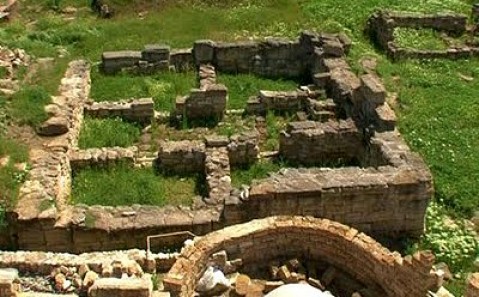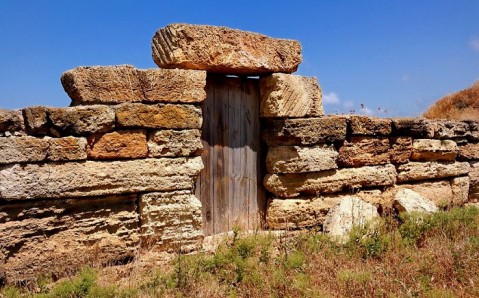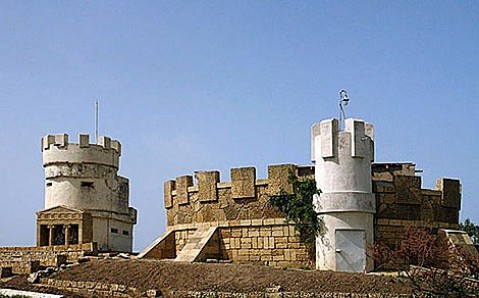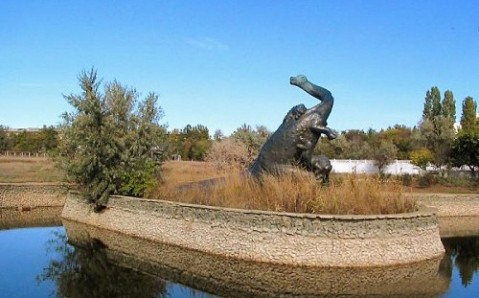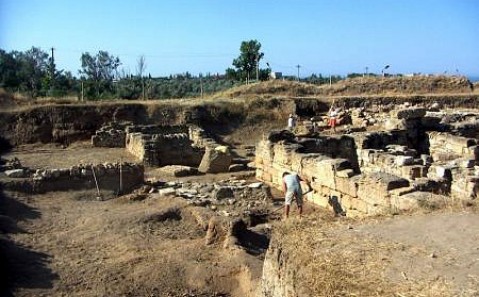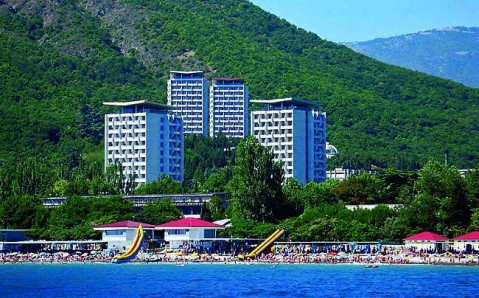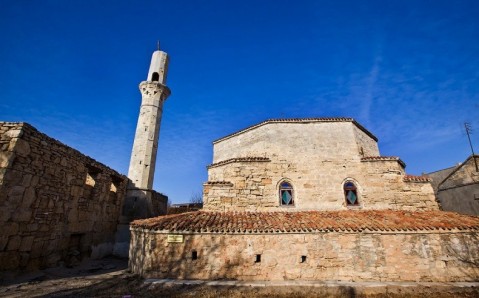Kara -Tobe
Saki, Yevpatoriyskoye Shosse, 2-a
Working hours: from 11 a.m. to 6 p.m., every day
Resort town Saky is left without any architectural monuments, but with an interesting archeological site - ancient settlement Kara-Tobe, which serves as a tourist magnet for the whole western Crimea.
Greek and Scythian ancient settlement was discovered in the early 20th century on the Kara-Tobe Hill (it's Turk for Black Hill) and got its name from it. Excavations that started here helped to reconstruct ancient settlement's life.
Greeks came to western coast of Crimea in the 4th century B.C. They were attracted by local fertile rich black soil, suitable for growing quality corn that was very valued in ancient world. The Greeks conveniently founded their agricultural manor on the intersection of the major routes, connecting Northwest Crimea's settlements with Scythian Naples (now - Simferopol) and Greek Chersonesus (now - Sevastopol), and provided these towns with bread.
However, in the 2d century B.C., Scythians came to this territory. Mithridates VI (Eupator) of Pontus who ruled over the state on the other side of Crimean peninsula sent troops headed by general Diophantus to help Greeks. These troops destroyed Scythian settlements and built a fortress with threatening donjon tower on its place.
Remains of ancient defensive wall and tower - the largest in Northwest Crimea, by the way - were found during excavations and are now Kara-Tobe's main attractions on par with fragments of Scythian and Greek towns. Some historians state that it is the legendary fortress Eupatorion that gave name to modern Yevpatoria.
In the early 1st century B.C., Greeks were forced to leave the settlement, and Late Scythian settlement was built here and prospered over the next hundred years. With Bosporan King's troops coming to western coast in the 20th year A.D., Scythian period of prosperity was over.
The majority of objects, found during ancient settlement's excavations, are now kept in the Museum of Northwest Crimea's Antiquities. It is situated in restored buildings of the former Black Sea Navy's coastal defence site, which was built on the Kara-Tobe Hill during the World War II. Museum's exposition renders perfect notion about culture, traditions, and life of the ancient Greeks and Scythians. Here you may see samples of ancient Greek utensils (cups, bowls), amphorae, terracotta statuettes and sculptures, women's decorations, Scythian ceramics.
There are also truly unique objects in the museum. For instance, alabaster cast of ancient silver vessel that was owned by Roman jeweler. There are very few such artifacts in the world. Separate exposition is devoted to the Scythian warrior's armory: darts, arrowheads, and spearheads.
Wonderful glimpses over Kalamitsky Bay and its neighborhood open up from the observation deck on museum's roof. And in fair weather it's possible to see Chatyr-Dag Mountains.
Scythian manor was recreated near museum's building. It is an accurate copy of Scythian dwelling that stood here in the 1st century B.C. and is built in accordance with Scythian building methods and preserved samples.
Getting here. From Revolution Square take a bus, going in direction of sanatorium 'Poltava'.

 Crimea
Crimea

